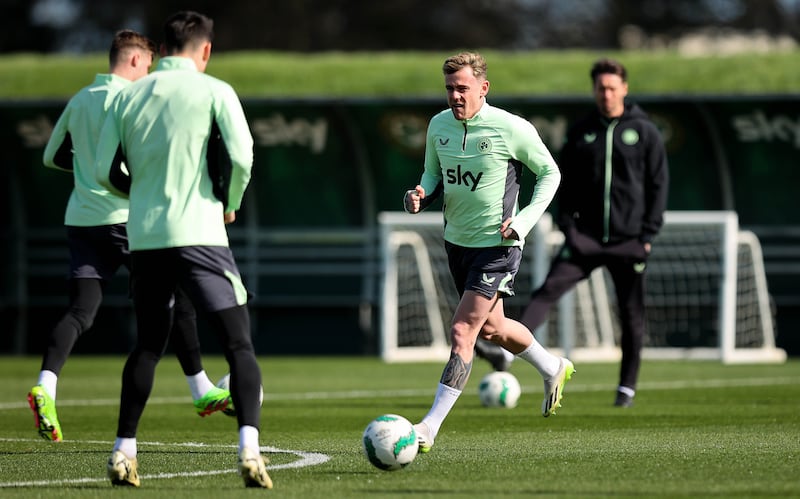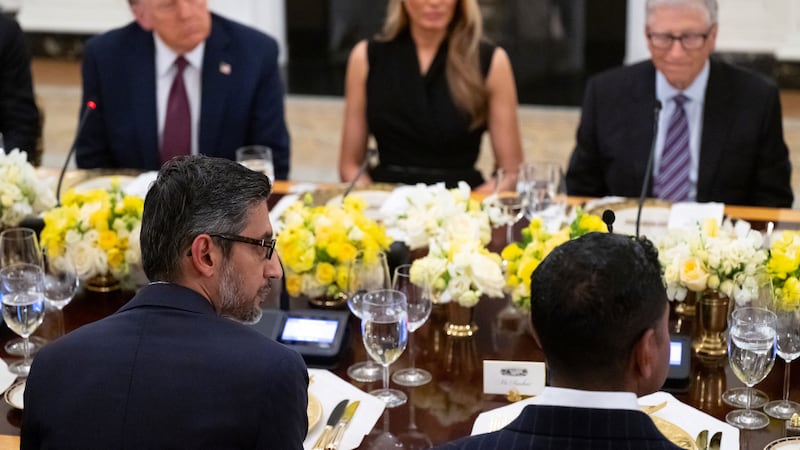Two years ago, Ireland played a Dublin friendly against Belgium and equalised twice in a 2-2 draw. It felt like the start of something.
It wasn’t – but the feeling that it could be brought 48,000 people to the stadium that day.
Since then, Ireland should only have got better, in theory at least. Yet a look at Ticketmaster, where masses of tickets remain available for the two upcoming friendlies, suggests that many supporters have lost interest.
They might say: what is there to be interested in? 2024, like 2022, is a year in which Ireland will play no tournament and no qualifiers – but in 2022 we had a story. What’s the story around this team? What’s it about? Where is it going? Nobody really knows.
READ MORE
“Speed wasn’t one of the criteria that we were looking at in terms of measure of success,” Marc Canham explained earlier this month at the unveiling of John O’Shea as interim coach.
While most would agree it’s worth waiting for the right coach, the price of taking so long to find one is that a sense of drift and stagnation has settled over the whole operation.
This could have been a big week for the FAI. New season, new coach, new sponsor, new start.
Instead, the announcement of the new sponsorship deal with Sky passed in midweek almost unremarked, with chief executive Jonathan Hill deciding not to speak the media. You might have thought Hill would leap at the chance of some kind of victory lap but the risk of awkwardness is apparently too great.
The FAI did at least post about the new Sky-emblazoned replica team shirts on social media, where the replies that weren’t raging at the prices (€95 for the basic men’s jersey, €140 for the ‘player fit’) were raging at the fact that Ireland, alone among the nations, has a sponsor’s logo on the front of the fans’ shirts.
Instead of a new coach defining the aims of a new era, we have John O’Shea in – we’re told – a temporary role. O’Shea is one of the best Irish footballers of his generation, and in terms of trophies, one of the most successful of all time. For now, everybody still likes him.

He says he’s been thinking about becoming a manager since his late 20s, but there’s no reason to expect him to be especially good at it; he hasn’t proved anything yet.
In this he differs from someone like Gus Poyet, who has proved in a succession of jobs that he is an average manager. O’Shea might prove to be better than that. He might not.
If O’Shea somehow wins these two games, it will put enormous pressure on the FAI to produce someone really convincing in April, when they say the new permanent coach will be announced.
A lot of Irish supporters would be unimpressed to see O’Shea and his all-Irish staff standing down so Canham can appoint a Poyet or a Willy Sagnol (a kind of French John O’Shea who was given the chance to develop as a coach by his own national football federation.)
For now, O’Shea must decide how he wants the team to play. Stephen Kenny used 3-4-3 or 3-5-2 for most of his time in charge, one of the reasons being he felt Ireland lacked the wingers to play 4-3-3 or 4-2-3-1.
That’s no longer the case. Mikey Johnston has excelled since moving to West Brom on loan from Celtic, with the captain of the Championship side, Jed Wallace, describing him as “the best player in the league at the moment”.
The top scorer in that league is Sammie Szmodics, who should finally make his long-awaited Irish debut on Saturday. If the 28-year old can bring his Blackburn confidence to international level, he can be an important player for Ireland.
Szmodics says his preference is to play as a 10 and you can imagine his energetic running combining well with Evan Ferguson at 9. A Johnston-Szmodics-Ferguson-Ogbene front four is worth looking at.
Accommodating those players in attack would mean playing two centre backs rather than three. Even without the injured John Egan, centre back might be the position where Ireland are strongest, with the Lyon hulk Jake O’Brien now part of the squad alongside Nathan Collins, Andrew Omobamidele and Dara O’Shea.
Maybe some of this centre back surplus could be redeployed in midfield, adding physicality to an area where Ireland look underpowered. Paul McGrath won a lot of his caps in midfield. Few ex-players know more about adapting to different positions than John O’Shea.
On Friday, he sounded as though he might be preparing at least one of the players for an unfamiliar role.
“I was saying to someone the other day ‘don’t worry, a bit of versatility is not a bad thing now and again’. Whether it be midfielders who can float from the 6, 8 or 10 positions, or a full back who can play winger, a centre back that can play full back, there is plenty of versatility in the squad. A centre back could easily be a midfielder. Ireland have a good history of that.”

















